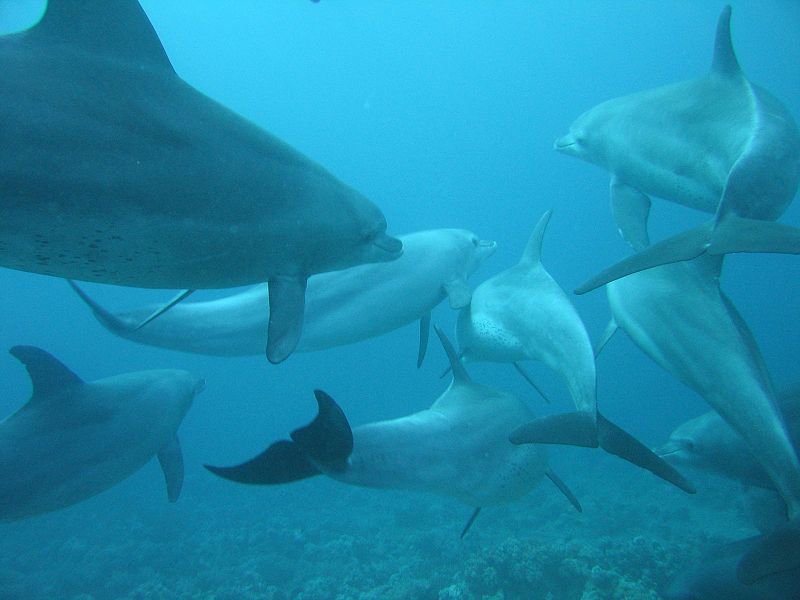Scientists have uncovered the secret behind some dolphin's amazing aquatic acrobatics: they have flippers that work in the same way as delta wing, those characteristic triangular-shaped wings on fighter jet planes, or that feat of 20th century engineering, Concord. So, dolphins can literally fly through the water.
 The research team, led by Laurens Howle and Paul Weber from Duke University, took flippers from 7 species of dead dolphins and whales, either from museum specimens or animals that were stranded on beaches. They produced detailed 3D pictures of the flippers by putting them into a computer tomography, or CT, scanner. Based on these scans, the team then made accurate models of the flippers and then placed them in a flow tunnel with water rushing through it.
The research team, led by Laurens Howle and Paul Weber from Duke University, took flippers from 7 species of dead dolphins and whales, either from museum specimens or animals that were stranded on beaches. They produced detailed 3D pictures of the flippers by putting them into a computer tomography, or CT, scanner. Based on these scans, the team then made accurate models of the flippers and then placed them in a flow tunnel with water rushing through it.
By mounting the model flippers on a set of special weighing scales the team measured two forces, the lift and drag, generated by each flipper at different angles of attack. The key to how wings and flippers work is their tear-shaped cross section. As air - or water - flows over the wing, it has further to travel over the top than across the bottom of the wing, so it speeds up and that results in a lift, pushing the wing upwards. To be stable in the water, the flipper needs to generate enough lift to overcome the drag caused by friction with water, which tries to force the fin backwards.
The different shaped flippers from different performed differently with some species doing better than others. The familiar bottle nosed dolphins generated greatest amount of lift, while the least efficient fins belonged to the harbour porpoise and Atlantic white-sided dolphin.
Some of the dolphins have flippers that act in a similar way to the triangular swept-back wings of fighter jets. They create additional lift with a "leading edge vortex", a swirl of air currents over the front edge of the wing.
This all goes to help explain how some dolphins can swim incredibly quickly, up to 20 miles an hour. These are speeds that until now were thought theoretically impossible because water creates too much friction and drag for these marine mammals to keep swimming against. Now we have a better idea how they do it.










Comments
Add a comment